Barbarella’s ‘make love, not war’ style
Can a bombshell space adventurer scantily dressed in a futuristic outfit actually avert a war? In 1968, the writers of the film Barbarella actually thought so—through a camp, goofball sci-fi caper set in a utopian 41st century starring Jane Fonda as the titular character whose specialty is “love” on an idyllic Earth where war has been practically banished yet the evil scientist Durand Durand has managed to create the Positronic Ray superweapon which threatens to destroy humanity.
Taking on the assignment in the planetary region of Tau Ceti to convince Durand to go back to peace-loving ways, Barbarella discovers her sexuality for the first time through a Catchman on patrol even if she finds it baffling at first since she was taught in her evolved world to use “exultation transference pills,” making physical contact unnecessary and sex just a distraction in an “efficient” universe.

A metaphor for the liberation from sexual repression at the time, Barbarella’s awakening to having agency over her body and the joys of physical intimacy without guilt give her an invincible status of “purity” that saves her in the end: When Durand tries to kill her with the Excessive Machine through a fatal overdose of sexual pleasure, she makes the machine go haywire. When the Black Queen unleashes the subterranean Mathmos powered by evil thoughts, Barbarella is spared as the destructive slime forms a protective bubble around her because of her innocence.
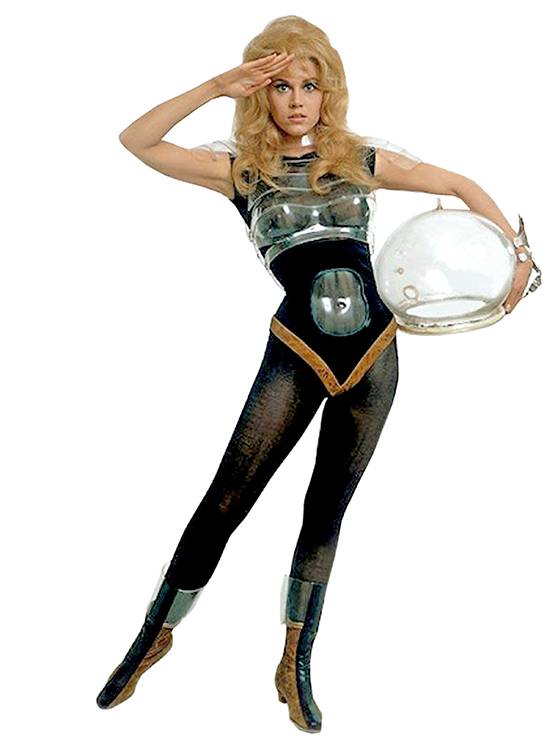
Of course, Barbarella is too pure and virtuous to be true, but the fantasy is nevertheless a source of comfort, if not wishful thinking, during fraught times like the present when events in Ukraine and Gaza have ignited anti-war sentiments which recall the counterculture of the ’60s when “Make Love, Not War” was a popular slogan used by those who opposed the Vietnam war. The saying was adopted by hippies and ultimately trickled down to mainstream society where you see its influence in literature, art, film and fashion. Incidentally, Jane Fonda was an anti-Vietnam war activist then and remains an advocate in the promotion of peace as well as the liberation of women from sexual and gender stereotypes.

It’s no surprise that Barbarella has reemerged in popular consciousness. Entertainment Weekly lists it as one of its 50 top cult movies. Based on a 1962 comic strip by Jean-Claude Forest, it became a comic series again last year, published by Dynamite Entertainment. The rights holders have plans for a multimedia wave of Barbarella nostalgia projects heralded by a remake of the film starring Sydney Sweeney, the breakout star of Euphoria.
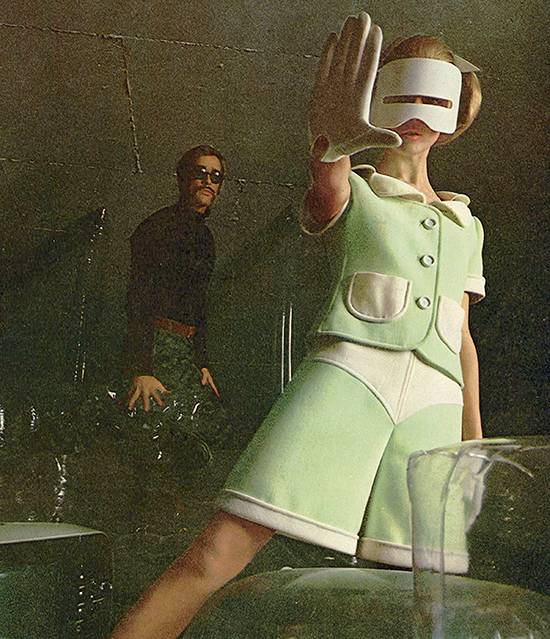
On the runways, the house of Paco Rabanne, whose founder was a big influence on Barbarella’s costumes designed by Jacques Fonteray, made a successful comeback through its new creative director Julien Dossena, making the ’60s film heroine a potent source of inspiration together with her Space Age aesthetic.

The Space Age was inspired by the Space Race of the Cold War, as well as science fiction paperbacks, films and TV series like The Jetsons, Star Trek and Lost In Space. Fascination with outer space and sci-fi was already growing in the 1950s, so by the ’60s, the trend was in full swing, pushing boundaries with new materials and silhouettes as designers looked to the exploration of unimaginable futures and the immeasurable vastness of the universe.
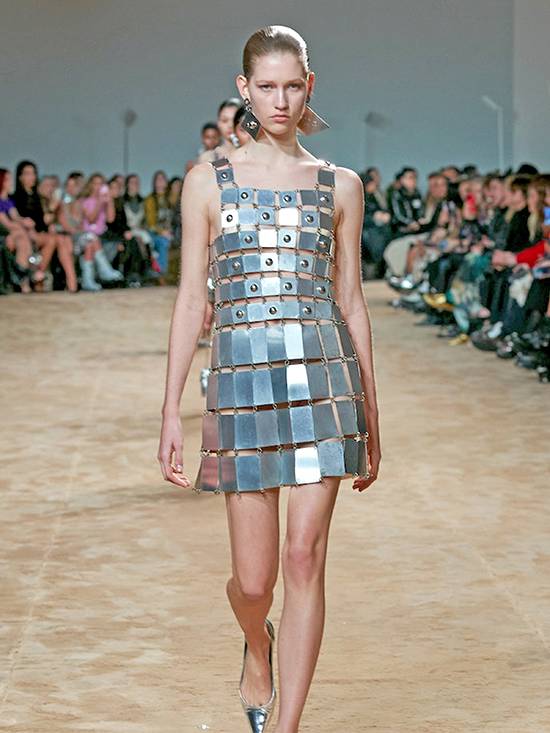
André Courrèges, for one, was so extremely devoted to space travel that he was invited by NASA to visit Cape Canaveral. A trained civil engineer, he used his mathematical knowhow to construct garments that were unheard of when he presented his 1964 collection: architecturally sculpted, double-breasted coats; tunics with hipster pants; mini dresses with cut-out panels that were worn without bras to liberate the body—all accessorized with goggles, helmets and flat go-go boots inspired by astronauts. Unconventional materials like metal, plastic and PVC were used with a color palette of metallics and white. The New York Times announced him as “the brightest blaze of the year” to herald the shift from the LBD to the LWD, with his looks widely copied in the mass market.

Another fan of space travel, Pierre Cardin also visited NASA where he tried on the Apollo 11 space suit. In 1964, he designed the “Cosmocorps” collection which broke all the rules of the era through bodysuits, jumpsuits and unitards in bold colors and graphic and geometric shapes, accessorized with codpieces and asymmetrical zippers. Whereas other designers were inspired by foreign cultures, he looked at science like computer design which resulted in his computer coat with fins at the back.
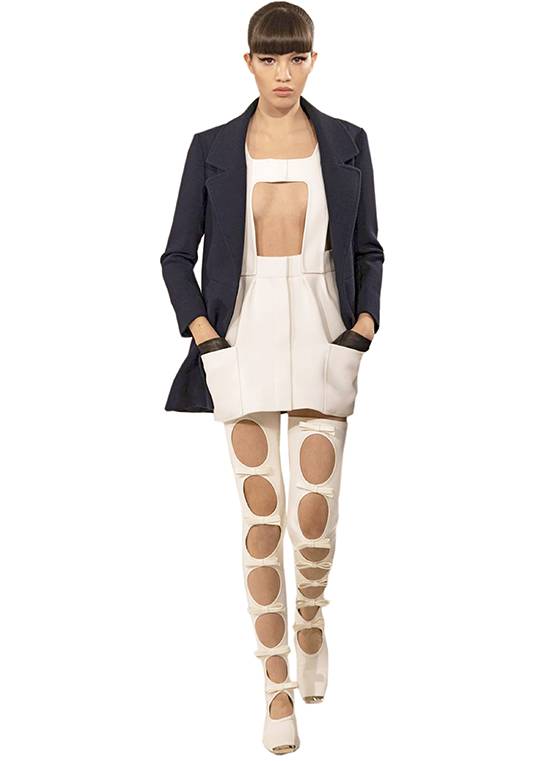
@maisonvalentino
Rabanne, on the other hand, claimed that in one of his past lives he had traveled to Earth from a planet called Altair to organize our planet. His designs were no less outrageous, avoiding traditional fabrics in favor of plastics and metals strung together with wire to produce his first collection in 1966 aptly titled “Twelve Unwearable Dresses in Contemporary Materials,” featuring the first of his metal-linked dresses which became emblematic of the space age era, worn by fashion icons like Audrey Hepburn in the film Two for the Road.
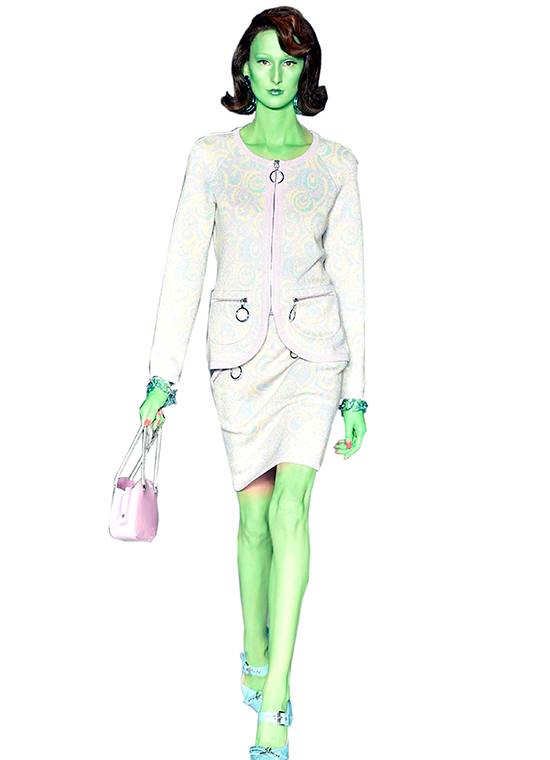
The designers of this time concentrated on clean lines and boxy, geometric contours, sometimes ignoring the female form in favor of a more structural, architectural unisex look. They also wanted to liberate the female body which they believed should be free and not treated as something so delicate. In the midst of feminism, Rabanne said that “it was a moment when women emerged to be warriors because they needed to affirm their desire for emancipation, freedom and liberty. The armor was almost necessary.” The fight continues today as designers find new ways to create modern-day Barbarellas who negotiate wars in the urban landscape which may at times appear as alien as Tau Ceti with evil Durands who need to be converted with love.


